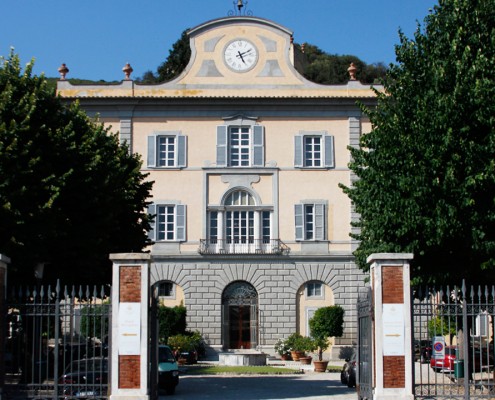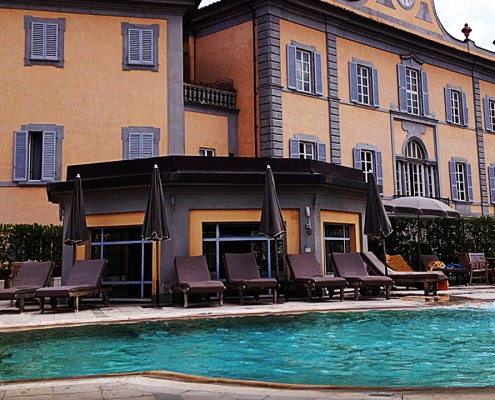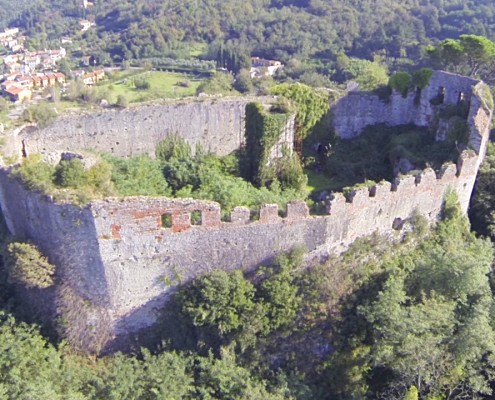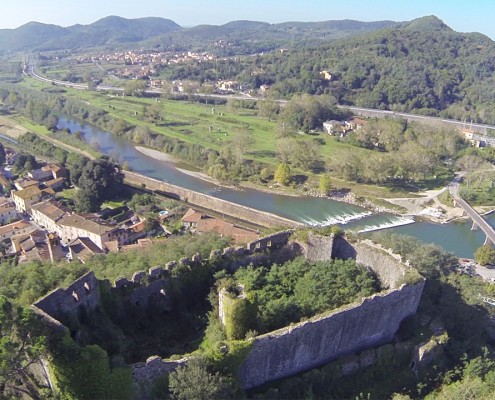COMUNE DI SAN GIULIANO TERME
TERME “BAGNI DI PISA”
Gli effetti benefici delle acque di San Giuliano Terme erano già noti in epoca etrusca e romana, quando furono costruite le prime strutture per lo sfruttamento delle sorgenti termali. Nel suo aspetto attuale l’elegante edificio termale è frutto di una recente ristrutturazione che ha riportato il complesso allo splendore del XVIII secolo quando, residenza estiva del Granduca Francesco Stefano di Lorena, era uno dei luoghi mondani di riferimento per la nobiltà di tutta Europa. Le Terme di San Giuliano sono il luogo ideale non solo per chi ricerca gli effetti terapeutici delle acque, efficaci per malattie reumatiche, vascolari e delle vie respiratorie, ma anche per chi vuole trascorrere una vacanza rilassante, lontano dal ritmo frenetico della vita di tutti i giorni prendendosi cura di sé. Tra massaggi in meravigliose cabine arredate in stile orientale, bagni rilassanti nelle splendide piscine termali, una breve sosta nell’Hamman dei Granduchi, una grotta naturale dove l’acqua termale affluisce da una piccola cascata, e una tranquilla passeggiata nel Giardino Zen non è poi così difficile raggiungere la pace dei sensi.
ENGLISH VERSION
Beneficial effects of the water of San Giuliano Terme were noted as long ago as the Etruscan and Roman ages, when the first structures were built to make use of the thermal springs. The current look of the elegant thermal building is due to its recent renovation, returning the setting to the splendour of the 18th century when it was the summer residence of Grand Duke Francis Stephen and was one of the social hot spots for nobility throughout Europe. San Giuliano Spa is the ideal place not only for those in search of the therapeutic benefits of the water, useful for rheumatic, vascular and respiratory illnesses, but also for anyone in search of a relaxing holiday, taking time out to be pampered far from the hectic rhythm of everyday life. Between massages in wonderfully furnished oriental style cabins, relaxing baths in the splendid thermal pools, a short spell in the Hamman dei Granduchi, a natural cave where the thermal water flows from a small waterfall, and a peaceful walk in the Zen Garden, it seems that immersing oneself in a sense of peace is not so difficult after all.
ROCCA DI RIPAFRATTA
Il paese di Ripafratta conserva il suo aspetto di borgo fortificato medievale su cui risalta la struttura imponente della rocca. Grazie alla sua posizione strategica, a dominio del corso del fiume Serchio nel punto più stretto della sua valle lungo il passaggio obbligato fra Pisa e Lucca, Ripafratta risulta essere stata fortificata sotto il dominio pisano prima dell’anno Mille. Ancora oggi è possibile rendersi conto dell’importanza della rocca, fulcro del ben più vasto sistema difensivo di questa delicata zona di confine. Sopra il borgo svettano imponenti le alte cortine murarie che racchiudono il cuore della fortificazione. Un’unica porta, ancora sovrastata dagli stemmi dei vari podestà pisani e fiorentini, conduce all’interno della piazza d’armi. Nel cortile interno sono i ruderi della residenza del conestabile e gli accessi ai sotterranei e alle cisterne dell’acqua. Altre due torri angolari, anch’esse scapitozzate, chiudono ad est e ovest le difese; sui colli attorno alla Rocca sorgono varie torri di vedetta di forma quadrata.
ENGLISH VERSION
Today, the town of Ripafratta still has the same medieval fortifications as centuries ago, and is dominated by its imposing fort. Thanks to its important strategic position, which overlooks the Serchio River and valley that connects Pisa to Lucca, the fortified town of Ripafatta was erected in around 1000 AD. Today, it is easy to understand the fort’s strategic importance, mainly due to its close proximity to the border. The fortified walls are high and were able to adequately protect the small town. The architectural additions in brick made by Sangallo in the 1400s can still be seen today. The only entranceway, which still features the coat of arms of the Medicis and the Pisans, leads to the central square and the watchtowers. The center of the fort is the oldest part of the entire structure. The fort also contains other ruins, underground tunnels and waterways. Two corner towers are located on the east and west sides of the fort. In the surrounding hillside, other watchtowers were erected, however these are in very poor condition and risk collapse.




